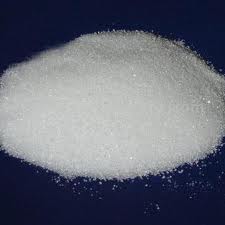Products
 News
NewsThe Health assessment information on Benzoic acid
Benzoic acid health assessment information is included in IRIS only after a comprehensive review of chronic toxicity data by U.S. EPA health scientists from several Program Offices and the Office of Research and Development.Early studies (Gerlach, 1909) indicate that laboratory animals are inappropriate models for studying the toxicity of benzoic acid in humans (FDRL, 1972) (see Additional Comments). Based on data regarding the amounts of Benzoic acid and sodium benzoate produced as a food preservative, FDA (1973) estimated a daily per capita intake of 0.9-34 mg for benzoic acid and 34-328 mg for sodium benzoate. At these levels, there are no reports of toxic effects in humans. These compounds have Generally Recognized as Safe (GRAS) status by FDA. Therefore, the upper ranges can be considered NOAELs for benzoic acid and sodium benzoate. In the stomach, both benzoic acid and sodium benzoate exist in their ionized form, benzoate, which is absorbed rapidly and completely by the GI tract. Therefore, exposure to sodium benzoate is comparable to exposure to benzoic acid if molecular weight differences are corrected for; here, 328 mg sodium benzoate is equivalent to 278 mg benzoic acid. Adding 278 to the daily intake for benzoic acid of 34 mg yields a total of 312 mg benzoic acid (see Conversion Factors). If no uncertainty factor is used, the RfD is 312 mg/day for a 70 kg human or 4 mg/kg/day. Sodium benzoate appeared to have no maternal toxicity, fetal toxicity, or teratogenicity in mice, rats, hamsters, or rabbits when given orally (FDRL, 1972). The highest doses tested were 175.0 in mice and rats, 300.0 in hamsters, and 250.0 mg/kg/day in rabbits.
The only chronic oral data available involve administration of Benzoic acid to rats and mice (Shtenberg and Ignat'ev, 1970; Ignat'ev, 1965; Marquardt, 1960). A dose of 40 mg/kg/day for 17 months was associated with decreased resistance to stress in mice and possibly with reduced food and water intake in rats after 18 months (Shtenberg and Ignat'ev, 1970). However, another report from this laboratory (Ignat'ev, 1965) indicated that 80 mg/kg/day in rats for 18 months was not associated with adverse effects on body weight, survival, or gross or microscopic pathology. If 40 mg/kg/day in mice in the study by Shtenberg and Ignat'ev (1970) is considered to be the LOAEL, application of an uncertainty factor of 1000 would result in an RfD of 0.04 mg/kg/day or 2.8 mg/day, which is near the lower end of the range of the estimated daily human exposure to benzoic acid (not including exposure to sodium benzoate). The lower RfD based on animal data is not unexpected, however, since application of uncertainty factors is intentionally conservative in the absence of human data. Since human data are available in this case, it is not appropriate to use the animal data for the RfD.






